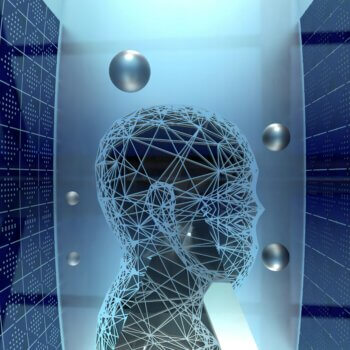Key Takeaway:
AI is transforming our engagement with faith and spirituality by making access to ancient texts easier and enabling AI-tutors to guide people through them. However, AI also poses challenges, such as misinformation and misrepresentation, which could lead to hate crimes and community tensions. In the future, AI will become a co-pilot for all human endeavors, including decision-making, and AI language models must be trained on truthful and morally right data. This could accelerate humanity’s attainment of artha, or economic prosperity, and lead to a revival in spiritual and faith-related pursuits. Regulatory frameworks for AI are being developed to ensure AI is trained on truthful and morally right data.
Science and faith are often kept in two distinct boxes that hardly ever intersect. However, I believe that as AI becomes more mainstream, it will fundamentally alter our engagement with faith and spirituality.
Let’s start by looking at what is already happening. Most ancient faith-related texts were documented in papyrus and palm leaves, many of which are difficult to access in the modern world due to two challenges.
First, a lot of those ancient texts that are still available are in fragments, some of which could crumble at any time. Second, for texts that have been digitised already, the language used in them is known only to a few people today and therefore the texts remain inaccessible to most.
AI is altering this landscape fundamentally by making access to them easy. A popular example from 2023 showed how computer scientists from the University of Kentucky had used AI to reveal the contents of carbonised papyrus that was burnt in the eruption of Mount Vesuvius in AD79.
Scientists looked through 3D X-ray images of the papyrus. They trained AI to read letters in the scrolls based on subtle changes left in structure of the papyrus by the ancient ink.
The AI was able to decipher and translate the ancient Greek word for “purple” on the scroll. Other ancient texts from the Indian sub-continent, for example, are in the Sanskrit language or Grantha script, which very few people can read and understand today.
Here again, AI systems are using language translation and text prediction to predict missing characters in old inscriptions. Some start-ups use AI technology called small language models that are trained on Sanskrit texts to create an AI-Guru (AI-tutors)to guide people through these texts. AI can also be used to preserve and help to restore faded cave paintings.
Misinformation problem?
As with any other technology, AI comes with its challenges. The most prominent in the context of faith is likely to be misinformation and misrepresentation. We have already seen an example of this last year with the viral circulation of a deepfake image of the pope. In that instance, it was largely meant as a bit of fun.
However, with the possibility of the creation of deepfake images and voice cloning through AI costing as little as £10 (using existing online tools such as Eleven Labs and D-ID) we might not be too far from more worrying cases. Imagine extremist organisations using this technology to create propaganda videos with the faked words of religious leaders or to misrepresent religious symbols.
Similarly, language models trained on extremist views could create outputs at scale to spew venom against particular faith groups, leading to hate crimes and community tensions.
Futuristic vision of AI and faith
Let’s next take a futuristic vision of AI and its intersection with faith. I would like to use the example of my Hindu faith to illustrate a 50-year future vision.
A key concept of the Hindu faith is purushartha, which outlines the four aims of human life: dharma (righteousness, moral values), artha (prosperity, economic values), kama (pleasure, psychological values), and moksha (spiritual values, self-actualisation).
In the next 50–100 years, AI is likely to become a co-pilot for all human endeavours including decision-making. For maintaining righteousness or dharma in the world, the algorithm and AI language models must be trained on data that is truthful and morally right.
This won’t be guaranteed unless we build this into regulatory frameworks currently being drawn up for AI. The advancement in AI will naturally accelerate humanity’s attainment of artha, or economic prosperity, as we enter a world of abundance with multiple technological convergences.
Based on the clamour for solutions to the growing problem of societal inequality, we could see forms of universal basic income become the norm globally. This will free up a lot of time – now spent on day jobs – for humanity to take up other pursuits. This would in the first instance be more time spent on pleasure or kama activities.
With more quality time on our hands, we could even see a revival in spiritual and faith-related pursuits (moksha activities). That would be an interesting outcome of AI’s growing influence on the world.





























